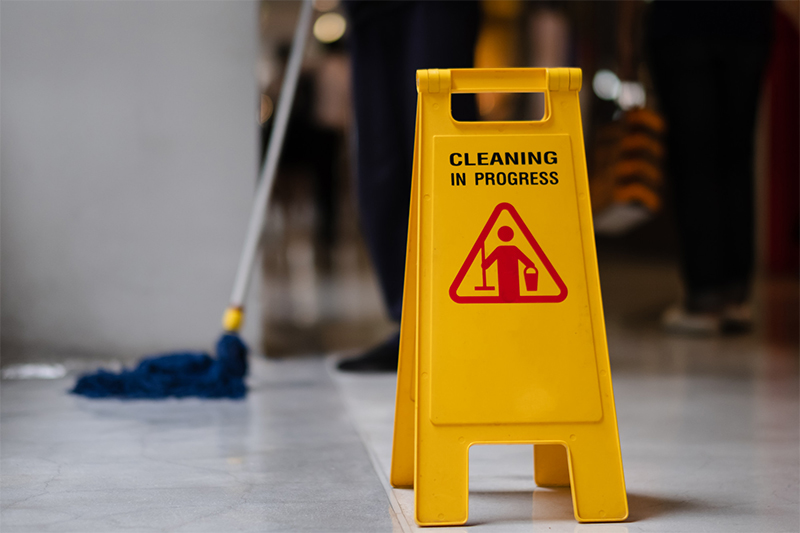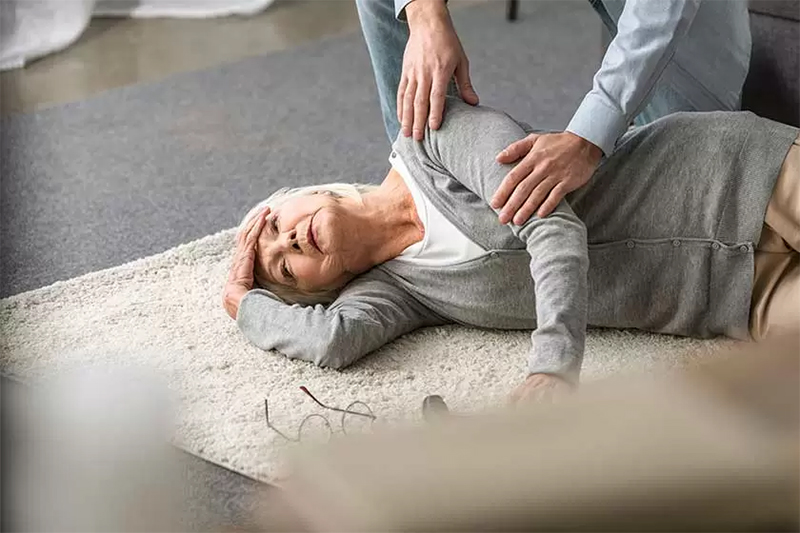According to the Centers for Disease Control and Prevention (CDC), falls are the leading cause of injury for adults 65 and older. Approximately 14 million people (1 in 4 older adults) fall annually in the United States. [1]
There were 75,316 falls that occurred among older adults in 2020. [1]
Let’s dive deeper into the leading causes of falls, injuries resulting from falls, fall-related mortality statistics in Idaho, and more.
Leading Causes of Falls
Falls are a major public health concern and can result in severe injuries and even death. Here are some leading causes of falls:
- Environmental Hazards: These can include slippery surfaces, uneven flooring, loose rugs, or clutter that can obstruct walking areas and contribute to trips and falls.
- Muscle Weakness: Reduced muscle strength and flexibility can lead to instability and an increased risk of falls, particularly for older adults or individuals with certain medical conditions.
- Vision Problems: Visual impairments, untreated refractive errors, or poor lighting can make it challenging to identify obstacles, leading to a higher likelihood of falls.
- Improper Footwear: Wearing ill-fitting or unsuitable footwear with inadequate grip can increase the likelihood of losing balance and falling.
- Medication Side Effects: Certain medications can cause dizziness, drowsiness, and lightheadedness, increasing the risk of falls.
- Lack of Handrails or Support: The absence of handrails or grab bars, especially on staircases or in bathrooms, reduces stability and increases fall risks, especially for seniors or individuals with mobility issues.
- Poorly Maintained Infrastructure: Neglected infrastructure, such as broken steps, loose handrails, or damaged flooring, amplifies the risk of falls.

Types of Injuries Resulting From Falls
Falls can lead to a range of injuries, ranging from minor bruises to severe trauma. Understanding the type of injuries resulting from falls helps in comprehending their impact on physical well-being and the necessity for immediate medical attention.
Here are some common types of injuries resulting from falls:
- Fractures: The impact of a fall often leads to broken bones such as the wrist, arm, hip, or ankle.
- Head Injuries: Head injuries can be caused by falls, particularly when the head directly contacts the ground or an object during the fall.
- Soft Tissue Injuries: Accidents like falls can result in a variety of soft tissue injuries, such as sprains, strains, and contusions, which may lead to pain, swelling, and limited mobility.
- Spinal Cord Injuries: In severe cases, falls can damage the spinal cord, leading to paralysis or loss of sensation in certain body parts.
- Dislocations: Joint dislocations, such as those in the shoulder or hip, can result from a fall. These injuries are often intensely painful and may necessitate medical treatment for correction.
- Hemorrhage and Shock: Falling can cause severe bleeding, leading to hemorrhagic shock, a life-threatening condition that necessitates immediate medical attention.
Prevalence of Falls Among Persons Aged 65 and Older in Idaho
Falls in Idaho are a significant public health concern among persons aged 65 and older. According to the Idaho Department of Health and Welfare, falls are the leading cause of injury-related hospitalizations and deaths among this age group. [2]
From 2019 to 2021, falls for those aged 65 and older in Idaho increased by 12%, while the national increase was only 3%. [2]
To address this issue, public health efforts in Idaho focus on fall prevention programs, promoting physical activity, and educating health care providers and older adults about the importance of fall prevention strategies.

Tips to Prevent Falls in Idaho
By incorporating some tips into daily life, individuals can reduce the risk of falls and enjoy a safer, more active lifestyle.
- Regular physical activity helps strengthen muscles and improve balance, reducing the risk of falling.
- Ensure that your home is safe and free of hazards. It includes keeping pathways clear, decluttering living spaces, installing grab bars in bathrooms, and ensuring good lighting throughout the house.
- Wear appropriate footwear, especially in Idaho’s challenging terrain.
- Some medications can cause dizziness or lightheadedness, increasing the risk of falls.
- Schedule regular eye exams to check for vision changes. Poor vision can contribute to falls, so ensuring optimal eyesight is essential for preventing accidents.
What To Do When You Experience a Fall
If you have experienced a fall, there are things you should do immediately following:
- Assess the situation: Determine whether you are injured and the severity of your injuries. If you are in a public place, seek help from those around you.
- Stay calm: Remaining calm can help you assess the situation and make rational decisions about your next steps.
- Check for Injuries: Assess yourself for any injuries, such as cuts, bruises, fractures, or sprains. If you suspect a severe injury, seek medical attention immediately.
- Move Slowly: If you can move, do so slowly and carefully to avoid exacerbating any potential injuries.
- Seek Help: If you cannot get up or feel seriously injured, call for assistance or use your mobile phone to contact emergency services.
- Rest and Recover: Once you are safely in a position where you are not risking further injury, take the time to rest and recover. Apply first aid as necessary.
- Seek Medical Attention: If you are seriously injured, seek medical attention promptly. It may involve calling an ambulance or visiting a hospital or urgent care facility.
- Prevent Future Falls: Take steps to prevent future falls, such as removing environmental hazards, using assistive devices if needed, and practicing good balance and strength exercises.
- Seek Legal Assistance: If you fall and experience a severe injury due to someone else’s negligence, it may be essential to seek legal help. It could be relevant in cases such as slipping or tripping on a hazardous surface in a public place or sustaining an injury due to a property owner’s negligence.

Goldberg & Loren’s personal injury lawyers in Boise can assess your case, gather evidence, and guide you through the legal process to pursue compensation for medical expenses, lost wages, pain and suffering, and other damages.
Book a free consultation today!
Sources:
[1] Older Adult Falls Data. (2024, May 9). Older Adult Fall Prevention. https://www.cdc.gov/falls/data-research/?CDC_AAref_Val=https://www.cdc.gov/falls/data/index.html
[2] Idaho Falls Data | Idaho. (n.d.). Idaho. https://www.gethealthy.dhw.idaho.gov/idaho-falls-data

